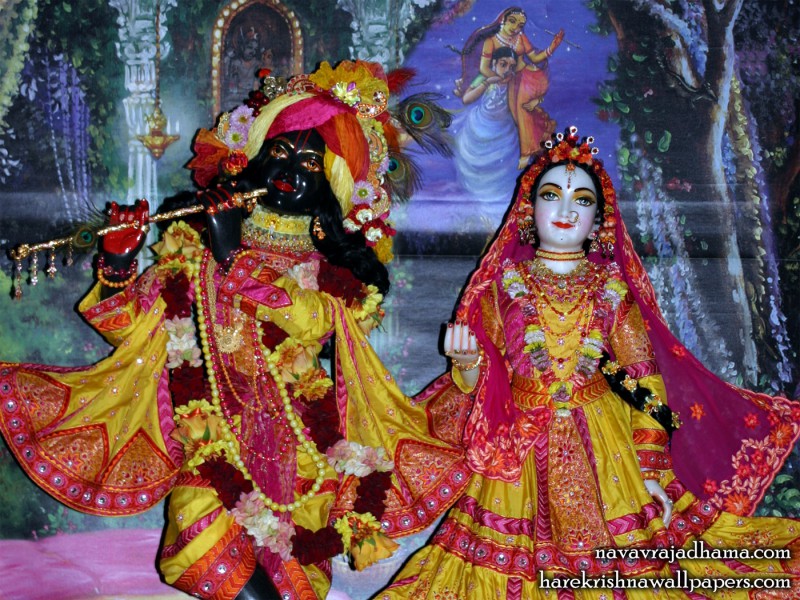I’m working on clearly understanding and translating Śrī Jīva’s Tattva Sandarbha 58 ~ 61, which explain the main subject of Śrīmad Bhāgavatam: “āśraya” — the Ultimate Origin of Reality. Here are my edited notes so far:
Determining the Ultimate Origin of Reality
The verses immediately following those quoted above define the Ultimate Origin of Reality by explaining the various aspects of a “person.”
Three entities combine to form a “person”: (1) Individuality, (2) Divinity, and (3) Tangibility. Divine powers [to interact with and influence the world] always accompany the individual, but it is the tangible body which allows them to distinctly exercise their potencies. If any one of these three is absent, the other two cannot fully manifest. Beyond these three is the witnessing self, sheltered by an entity which is its own origin, dependent on nothing else. [2.10.8 ~ 9]
The tangible body is included as a type of person, because it is connected to the true person, the conscious seer, who uses it to see. Śruti confirms that the tangible body can also be called a person: “There is a person made from food and water.”
“Individuality” refers to the conscious seer, who utilizes the senses like eyes and ears. He is also the “Divinity” — the divine perceptive powers which reside in the senses, like illumination and so on.
Before a tangible body is produced, the perceptive powers have no senses in which to reside, and the conscious seer has no way to illuminate the world with consciousness. In that state, the seer and the power of seeing exist together as one indistinguishable quantum of consciousness. When the tangible body exists, its physical senses (like eyeballs) allow the individual seer and its divine power of sight to operate distinctly as the possessor of senses and as the divinities which empower the senses to function.
Perhaps one or more of the three aspects of personhood are the Ultimate Origin of Reality? These entities are origins of realities, but the phrase,“if any one of these is absent, the other two cannot manifest,” indicates that they are mutually dependent on one another. Therefore none of them can be the Ultimate Origin of all reality.
To illustrate the mutual dependence of the three aspects of personhood: If there is nothing tangible to be seen, we cannot tell if the individual seer or the divine power of sight exists. Also, if there is no seer, we cannot tell if anything exists to be seen, or if there is any ability for sight. And if there is no sense of sight, we cannot tell if there is a seer or anything to be seen. Thus the three aspects of personhood are mutually dependent, indicating that none of them can be the Ultimate Origin.
Perhaps the three aspects of personhood as a unit are the Ultimate Origin? Bhāgavatam does not hold this opinion. It embraces the logic that the Ultimate Origin must be the self-originating origin of everything, without dependency. It therefore identifies a “Supreme Self” (paramātmā) as the independent basis and overseer of the three aspects of personhood. This paramātmā is “its own origin, dependent on nothing else” and is therefore the Ultimate Origin of Reality.
Perhaps the completely pure jīva-ātmā (individual self) is the “Supreme Self” (paramātmā) and therefore the Ultimate Origin? It is true that the pure jīva is a non-different ray of paramātmā and the witness of all metal and physical states:
“He who has become an insignificant consciousness is actually transcendent.” [1.7.5]
“Alertness, dreaminess, and unconsciousness are states the intellect falls into due to the qualities of the external world. The actual self is different from this intellect. It is the transcendent witness.” [11.13.27]
“The pure one is the witness. The impure one is the doer.” [5.11.12]
These statements establish that the pure jīva is the transcendental witness, but not that it is the Ultimate Origin of all reality.
“Beyond these three is the witnessing self, sheltered by an entity which is its own origin, dependent on nothing else.” The ātmā is the witness, and its origin is an entity who has no origin besides itself: the paramātmā. The difference between ātmā and paramātmā is that ātmā originates from paramātmā, but paramātmā is its own origin. Therefore ātmā can witness and control the three aspects of personhood within the external world, but it does not posses the ability to witness or control the paramātmā.
“The soul can be aware of anything happening within the external world, but cannot be aware of the all-aware, endless soul.” [6.4.25]
In conclusion, the Ultimate Origin of Reality — responsible for manifesting, sustaining, and unmanifesting all of existence — is the paramātmā.
Tagged:
Atma,
Jiva Goswami,
Paramatma,
Reality,
Self,
Tattva Sandarbha 







 Dear Shamasundhara,
Dear Shamasundhara, Sri Sri Radha Shyamasundar are the presiding Deities of ISKCON Hungary, New Vraja Dham. Their worship is one of the most opulent in the entire international ISKCON community. Under His Holiness Sivarama Swami’s direction, devotees have constructed a beautiful Vrindavan village and community.
Sri Sri Radha Shyamasundar are the presiding Deities of ISKCON Hungary, New Vraja Dham. Their worship is one of the most opulent in the entire international ISKCON community. Under His Holiness Sivarama Swami’s direction, devotees have constructed a beautiful Vrindavan village and community.
























